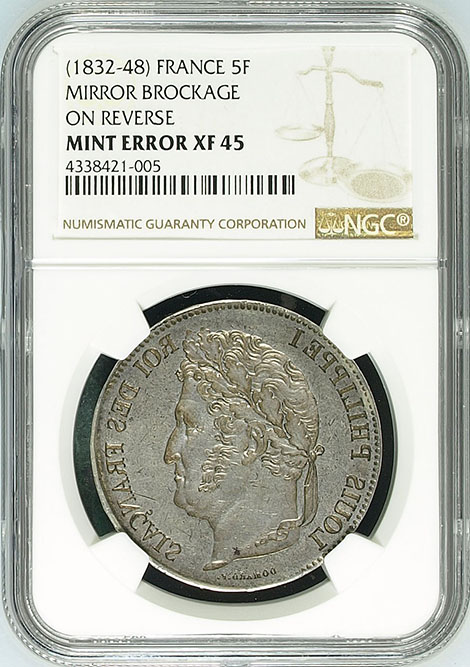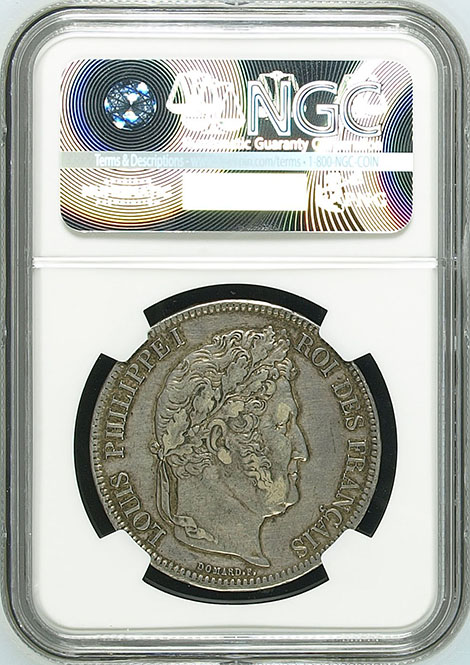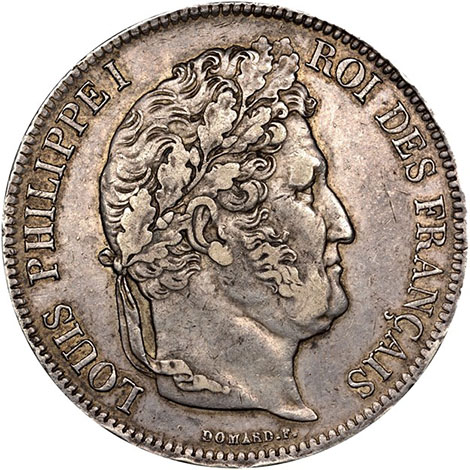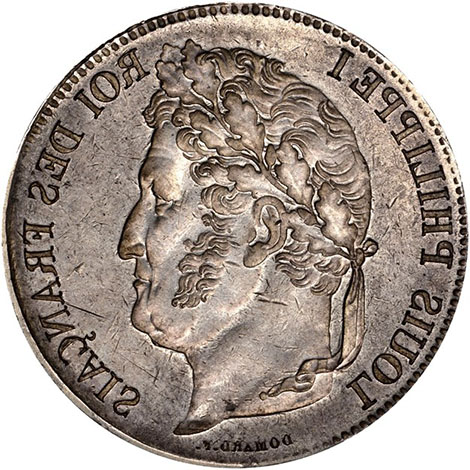NGC recently certified a pair of rare and extremely significant 19th century mint errors from France. These errors, known as mirror brockages, show the coin’s normal obverse design on one side, and an incuse mirror-image of the obverse design on the reverse.
A brockage occurs when an already-struck coin sticks to one of the dies. This coin, now called a “die cap” in numismatic terminology, is then struck into the next planchet that is fed into the press.
Under normal circumstances, the die, which is a mirror image of the coin, would impart a raised and correctly oriented design on the planchet. When a coin sticks to the die, however, the raised design of that coin is impressed into the next planchet. As a result, that newly struck coin has an incuse, mirror image design—just like the die.
A mirror brockage shows the correct design on one side and an opposite design on the other side. These are quite rare although they are a bit more common from this era than they are from the modernized mints of today. It is quite possible that some were intentionally made by mint employees.
These two coins are beautiful examples of essentially perfect mirror brockages. They were likely the very first (or only) coins struck with the reverse die cap. This is evident due to the sharp and centered designs. In late state die caps, the design would begin to distort and spread out as the coin is flattened by the force of each successive blow.
Both pieces circulated for quite a while before being noticed, or perhaps they were kept as pocket pieces. The first, an 1816-24 Five Francs, is graded NGC AU 53. The other, an 1832-48 Five Francs is graded NGC XF 45.
1816-24 France 5 Francs Mirror Brockage on Reverse
NGC AU 53
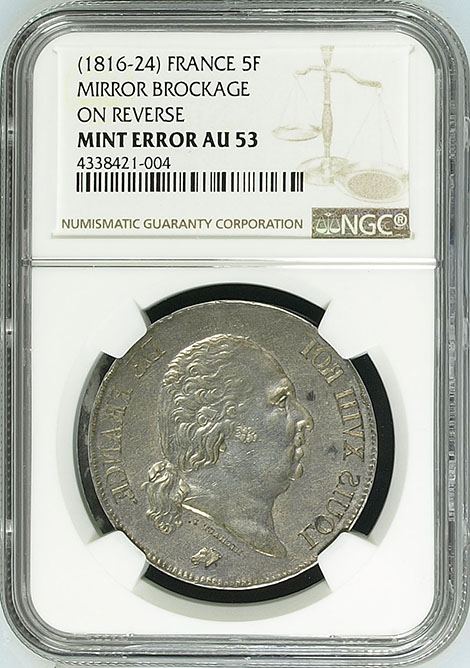
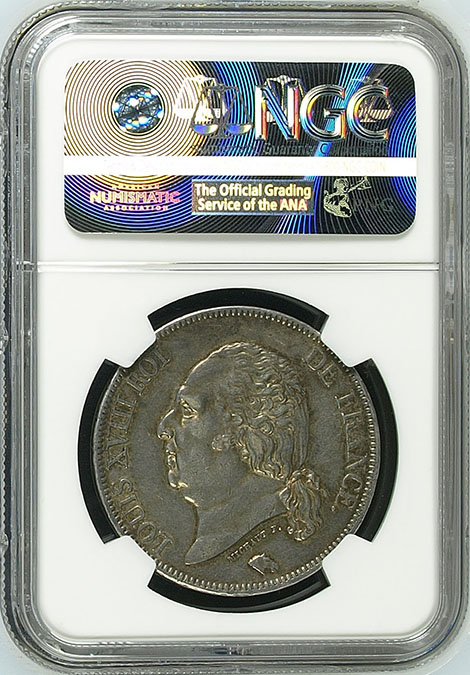
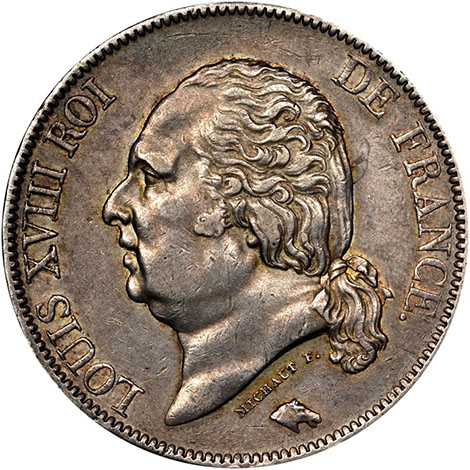

1832-48 France 5 Francs Mirror Brockage on Reverse
NGC XF 45
